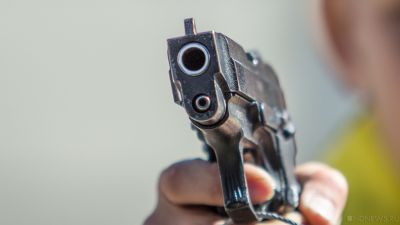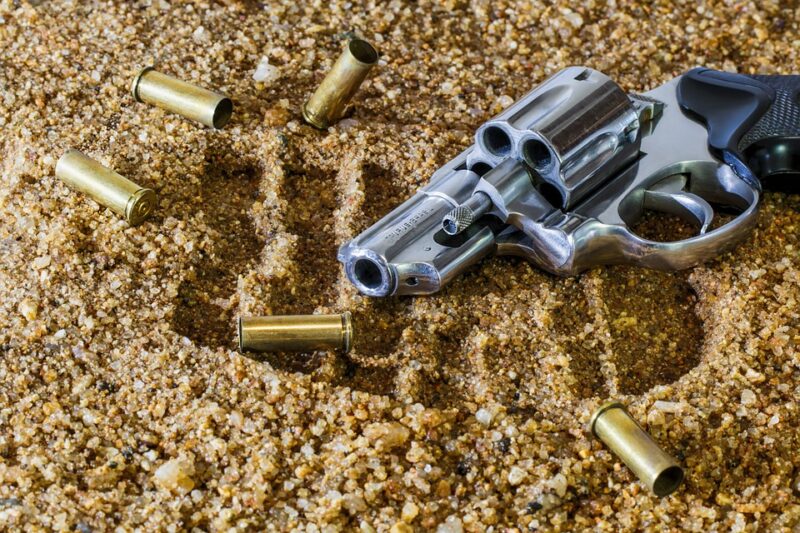Factors increasing the number of weapons in the hands of civilians
Self-made weapons become a serious cause of inaccuracies in counting weapons in the hands of the population. These are not only examples of pipes and scrap metal, but also pneumatics, replicas and weapons for firing blank cartridges, which can be converted into firearms.
In many countries, home-made weapons are custom-made hunting and sporting weapons. This includes Carlo submachine guns, popular in Palestine, and American rifles, the receivers of which are “80% finished.”
In different countries, such weapons are either included in official statistics or not. In the USA, for example, there are no “80% finished” weapons in official statistics. And in India, this calculation is carried out, but very inaccurately, although 2.5 million units of home-made weapons are manufactured there every year.

Factors increasing the number of weapons in the hands of civilians
The increase in the production of weapons and demand among the population are the main factors in the increase in the number of weapons in civilian hands. With the exception of some countries, such as Japan, the number of guns in the population is increasing all over the world. In England and Wales, for example, sales of rifles are increasing every year – by 3.4% per year, and in the USA – sales of all types of weapons are increasing by 4.16%. According to the Small Arms Survey, the number of weapons in the world increases by 1% every year.
Factors reducing the number of weapons in the hands of civilians
Weapons are destroyed, corroded or broken. Sometimes government bodies or international organizations record such cases. Although most often weapons can be withdrawn from circulation, but not destroyed. The police can also seize weapons, and then either destroy them, or return them to their owners, or sell them at an auction.
Not all weapons are the same
Data on the number of guns in countries most often cover all types of weapons in a row – whether they are single-shot home-made rifles or factory semi-automatic models. In addition, registration rules differ between countries – in Canada, for example, only short-barreled weapons need to be registered, but not long-barreled ones. Although some Canadian provinces, like the US, have their own registration requirements.
However, this counting problem is simplified in countries such as Afghanistan, Iraq and Somalia, where the bulk of illegal weapons are AKs and relatively few other types of weapons.
In the USA, for example, where detailed data is available, it can be observed that pistols and semi-automatic rifles have dominated over the past 10 years. The reason for this was the expiration of the federal ban on assault weapons in 2004, as well as the choice of buyers themselves. According to the National Shooting Sports Foundation, semi-automatic rifle sales accounted for 13% of all gun sales in 2012. And according to the ATF, in the same year, sales of handguns exceeded sales of revolvers by four or more times.

In 2016, the NSSF surveyed US hunters and shooters and found that 42.3% owned at least one AR-15-based rifle, and 6% of US adults said they had participated in competitive shooting with a modern sporting semi-automatic rifle, i.e. approximately 14 million people. In the following year, 24.8% of US hunters and shooters said they had purchased another modern sporting semi-automatic rifle.
Methods of counting weapons in the hands of civilians
The estimate of the number of weapons in the hands of civilians is based on the Small Arms Survey database, which in turn is based on the following sources:
a) National registers;
b) National demographic surveys (in 56 countries and territories);
c) Expert assessments;
d) Where the above sources are not available, similarity matching was used based on scores for the countries being compared.
The database is also based on the analysis of individual reports on gun ownership from various sources, including official documents and scientific studies in countries and regions, official responses to surveys sent out by the Small Arms Survey, news, and frequent correspondence with experts.
Conclusions
It is safe to say that the number of weapons in the hands of citizens in general is increasing, and not least thanks to the United States.
This conclusion was reached thanks to the great desire and ability of governments to provide data on the number of gun owners. But registries are only a small part of the overall picture, because 100 million units of registered weapons are only 12% of the 857 million units of weapons in the world.
This gap reflects the reluctance or inability to provide official data from registries, as well as the lack of information about countries where gun registration is not required.
Demographic survey results are also unavailable in those countries where armed crime flourishes. That is why the number of firearms in the world can only be estimated, not counted.
